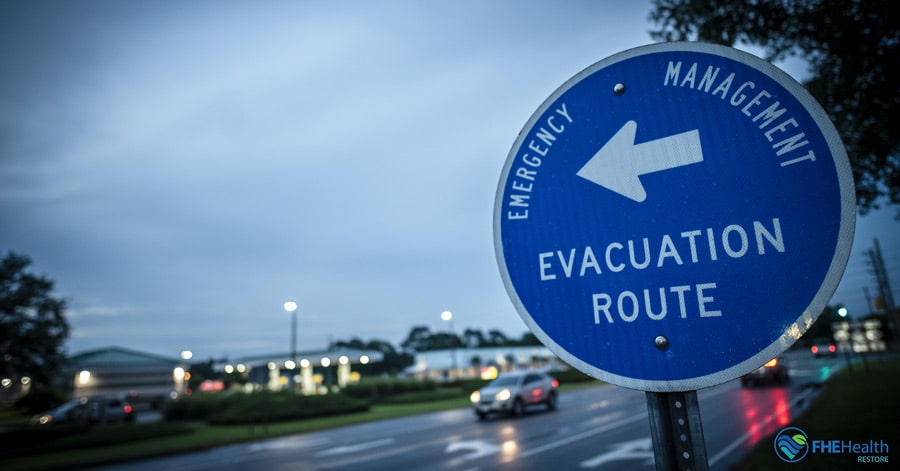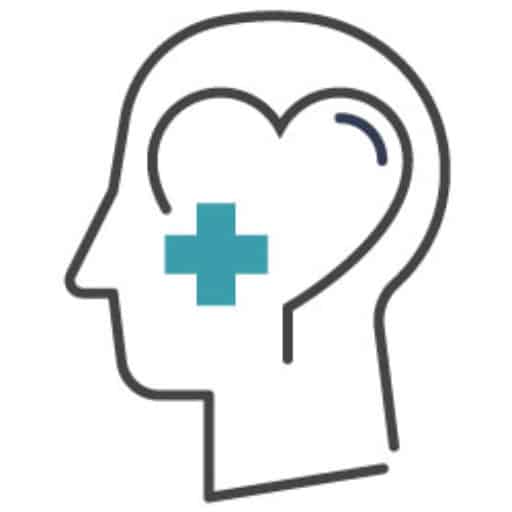After Hurricane Ian hit Florida in September 2022, more than 80,000 properties were affected by flooding, leaving many residents without a home. This natural disaster is one of the most powerful storms to hit the United States in recent years, and many communities are still dealing with the destruction months later. While the physical effects of Hurricane Ian were detrimental, the psychological impact it had on the people who experienced it has also been damaging. Post-traumatic stress disorder (PTSD) from natural disasters can linger long after a storm is over.
How Do Natural Disasters Cause Trauma?
Living through a natural disaster is an overwhelming and traumatic experience. The world has seen an increase in the occurrence of natural disasters such as hurricanes, floods, tsunamis and earthquakes, as well as the extent of destruction they cause. Many people experience the death of loved ones or irreparable loss of their homes and other personal possessions.
In the aftermath of natural disasters, individuals typically struggle with a range of cognitive, emotional and behavioral reactions. They may be shocked and at a loss of how to move forward. For some, the reality of their situation may not hit until several weeks later, resulting in mental health issues. Research shows that those impacted by disasters in their community are at risk of developing PTSD, emotional disorders or addictions.
When a natural disaster hits, it disrupts the values, norms and rituals instilled in a society, causing emotional turmoil for all who live there. An entire society experiencing a psychological reaction to an event is referred to as collective trauma. The emotional toll of disasters can lead to psychological and physical symptoms such as:
- Overwhelming sadness
- Fear or anxiety
- Anger
- Disconnection, displacement or numbness
- Difficulty sleeping or oversleeping
- Increase or decrease in energy levels
- Headaches or other physical pain with no clear cause
- Substance abuse
These emotional highs and lows can create a lot of conflicting emotions and reactions that may not always make sense to those experiencing them.
Phases of PTSD Caused by Natural Disasters
The mental and emotional phases associated with natural disasters are complex. Since storms are tracked before and after they occur, individuals may feel intense emotions even when the disaster isn’t actively happening. There are six phases of PTSD natural disasters can cause, all with varying degrees of emotions and reactions.
Pre-Disaster
The pre-disaster phase can last anywhere from a few minutes to several months, depending on whether there’s a known threat. Individuals may experience fear, uncertainty or vulnerability, because the situation is out of their control. They may also be frustrated or angry at their inability to protect themselves or their family.
Impact
The impact phase is usually the shortest and involves corresponding emotions to the type of disaster expected. Individuals may experience panic, shock, disbelief or confusion. After the initial shock wears off, a strong sense of self-preservation or protection over family may kick in as an individual begins preparing for the storm’s impact.
Heroic
After a disaster strikes, the heroic phase begins. Led by altruism, community members may attempt to help or rescue others who experienced more harm or damage than themselves. Risk assessment may be impaired during this phase due to a sudden adrenaline rush.
Honeymoon
The few weeks after a disaster are characterized by heightened emotions within the community. During the honeymoon phase, individuals may form strong bonds with others in their community as they try to move forward. Feelings of optimism may start to take over as individuals assist groups most affected by the disaster.
Disillusionment
The disillusionment phase can last for months or years after a natural disaster. Those who require aid may become discouraged when they realize relief is limited and not enough for their needs. Negative mental health outcomes such as stress, exhaustion, abandonment or substance use may arise. Certain events such as the anniversary of a disaster can also trigger negative emotions.
Reconstruction
About a year after a disaster occurs, the community may begin trying to reconstruct their lives even as they continue grieving. The reconstruction phase can last for several years and is defined by recovery and rebuilding as individuals adjust to their new normal.
How to Assess Mental Health Impact After an Event
After a disaster, it’s normal to experience a range of emotional, behavioral and physical changes while coping with what happened. The symptoms of PTSD natural disasters cause can include:
- Distress
- Fear
- Shock
- Anxiety or depression
- Mood swings
- Intense or unpredictable feelings
- Flashbacks
- Changes in thoughts or behaviors
- Difficulty making decisions
- Guilt
- Disconnection
- Substance abuse
Some people may feel the aftereffects stronger than others, depending on what their role was during the natural disaster. For instance, first responders play a more active role in responding to emergencies and providing aid during a natural disaster than the average citizen, leading to more intense mental health issues like depression or PTSD.
Children may also experience more severe stress reactions to a disaster depending on their age, exposure to the event, cognitive level and status of parents or caregivers. They may struggle with PTSD, grief, depression or anxiety. Other risk factors for stress reactions after a natural disaster include an individual’s mental health status before the event, the severity of their exposure, gender, age, family, physical injuries, socioeconomic status and level of social support.
Are There Short-Term Solutions to Prevent Psychological Harm?
While the psychological effect of living through a natural disaster can be difficult, there are measures you can take to reduce long-term harm from storm post-traumatic stress. The following strategies can help with mental health recovery immediately after a disaster occurs:
- Seek support from family and friends
- Express your feelings through talking, writing or other creative activities
- Take time to process and adjust to difficult situations
- Engage in healthy behaviors such as eating well, getting enough sleep and avoiding drugs or alcohol
- Join a support group
- Reestablish positive routines and hobbies
Counseling Can Help
If you or a loved one has lived through a natural disaster and are experiencing symptoms indicative of a mental health issue, professional help is available. Restore Mental Health offers therapy and counseling options to help individuals process what happened and move forward in a healthy way. Contact us today by calling and begin your journey to recovery with one of our trained counselors.



